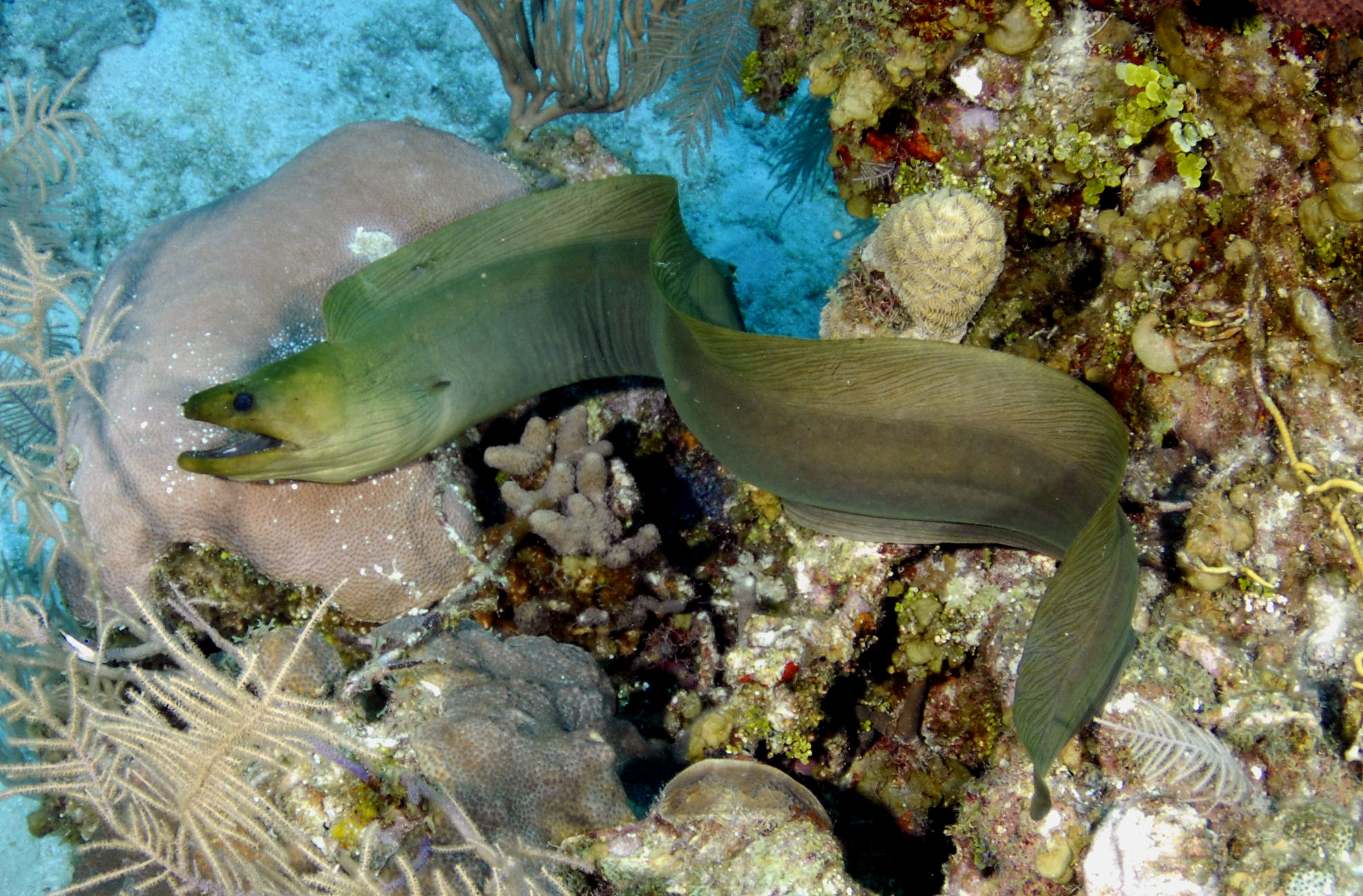
What is this snake flattened by a steamroller? It's an eel! Eels are very odd and mysterious organisms, and little is known about them. However, we must race to save the eels before overfishing devastates the population.
Most eels live in the shallow waters of the ocean and burrow into sand, mud, or amongst rocks. A majority of eel species are nocturnal, and thus are rarely seen. Sometimes they are seen living together in holes, or "eel pits". Some species of eels also live in deeper water on the continental shelves and over the slopes deep as 4,000 m (13,000 ft).They begin life as flat and transparent larvae, or glass eels. Glass eels drift in the surface waters of the sea, feeding on marine snow, small particles that float in the water. Maturing eels travel upstream and are forced to climb up obstructions, such as weirs, dams, and natural waterfalls. Eels are also caught and raised for food, especially in Japan and China. Once, the eel population declined dramatically due to overfishing, and it became illegal to catch eels without a license. Still, though, they are raised for food. Luckily, now, the eel population is making a comeback.
This is a glass eel. They are totally transparent, and only a few centimeters in length.
When you think of eels, probably you think of electric eels. Their shocking ability comes from two organs in their body: the Hunter's organ, and the Sach's organ. These organs make up four-fifths of its body, and are what give the electric eel the ability to generate two types of electric organ discharges: low voltage and high voltage. These organs are made of electrocytes, lined up so a current of ions can flow through them and stacked so each one adds to a potential difference. When the eel locates its prey, the brain sends a signal through the nervous system to the electrocytes. This opens the ion channels, allowing sodium to flow through. By causing a sudden difference in electric potential, it generates an electric current in a manner similar to a battery. The Sach's organ is used mainly in electrolocation, while the Hunter's organ produces the current to shock prey.
Electric Eel
You can help protect eels by simply not eating it. At some sushi restaurants, they sell eel sushi or eel sauce. Before you order an eccentric sort of sushi, ask if it involves eel.







